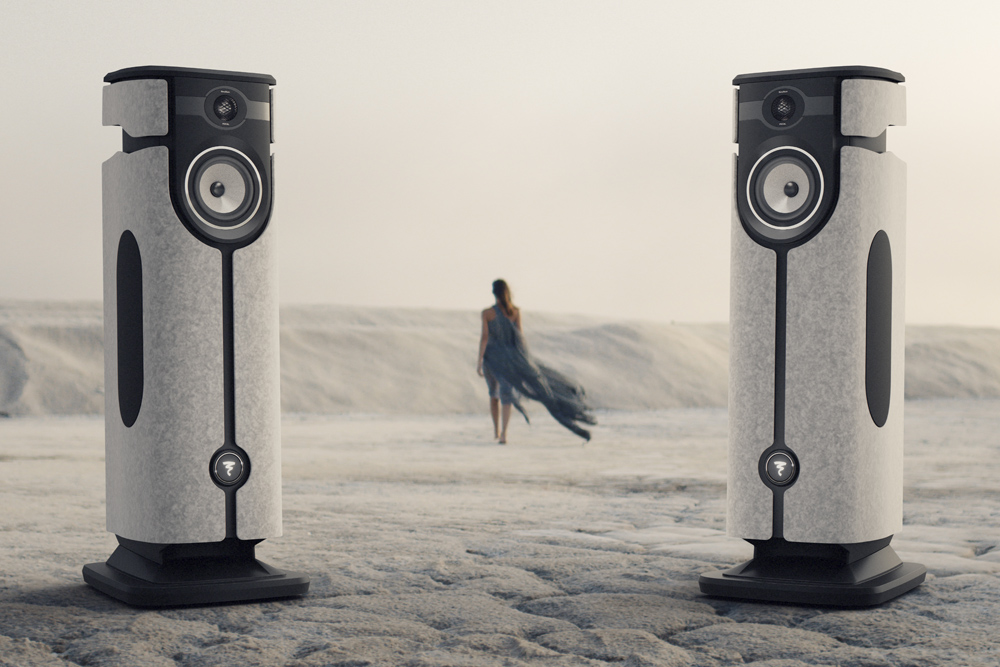The wireless speaker space has been an instrumental disruptor in terms of the way the mass market now consumes music. Overwhelmingly, wireless speaker technology has been concentrated in the extremely affordable section of the market. There are literally hundreds of inexpensive products from the portable to the sizable. For the average consumer, the value on offer is indisputable. Mostly, these products feature streaming technologies of all casts (pun intended), heavy DSP, long-life battery power, weather sealing and more. They provide easy access to music to an audience which may, we positively propose, eventually discover the wonders of high-end audio. It’s at that point, at that now realised singularity, that Focal’s Diva Utopia enters stage left. It aims to provide convenient functionality in a package which, in one step, transcends the category from mass market ubiquity to, in comparison, a level way beyond the stars. Yeah, a high-end, wireless loudspeaker system designed to perform at ‘audiophile’ levels.
A Creative Utopia
While not unique in the high-end – there have been other examples of systems encompassing similar ideologies – Focal’s Diva Utopia comes to market with a number of leg-up advantages. For starters, France’s Focal is one of the foremost players in the loudspeaker industry. The company employs a large team of talented engineers tasked with designing bespoke, highly advanced drivers that feature cutting-edge materials. For that purpose, Focal has developed custom tooling and acquired a Klippel measurement system operating within a dedicated anechoic chamber. Focal speakers’ beautiful cabinets are also produced in-house by skilled artisans with decades of experience in fine-furniture-level crafting.
In addition, you could not begin an analysis of a Focal loudspeaker without addressing the elephant in the box. Yes, Focal employs advanced materials to build superbly engineered drivers that are among the most highly regarded in the industry. In Diva Utopia, the company employs some of its best.
So, the background credentials are most definitely there. Yet, aside from the ample built-in technologies, will Diva be a worthy option at high-end performance levels? For an answer to that, you’ll have to read on, but first we need to closely examine the ample features list which make this loudspeaker an all-in-one solution.
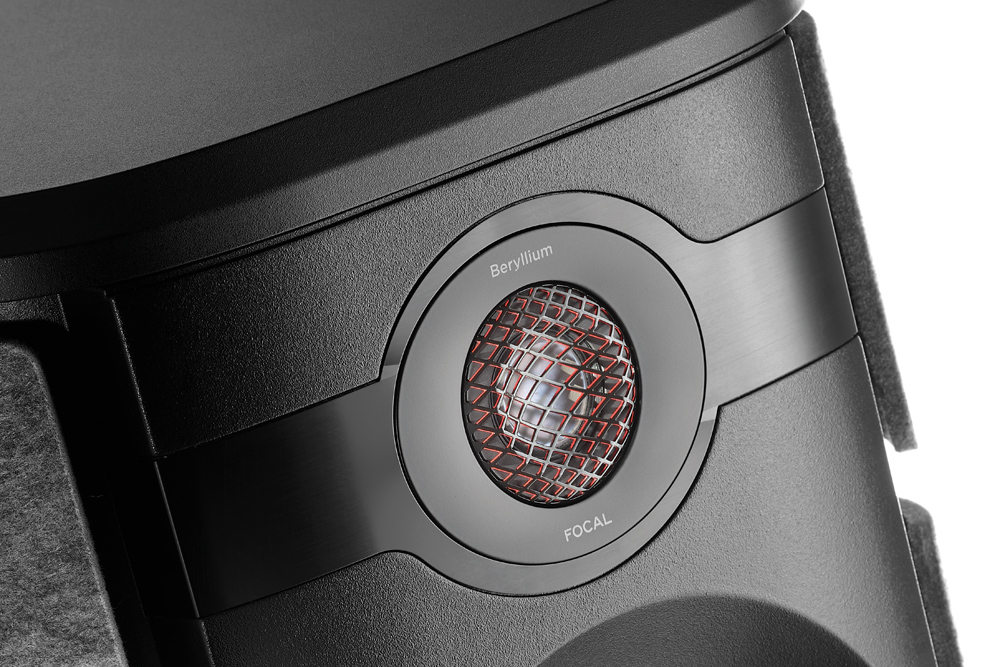
Starting at the top of this 3-way speaker, we have a 27 mm pure beryllium ‘M-profiled’ inverted dome tweeter capable of high power handling, partly due to its large 25 mm voice coil. The ‘M’ profile is said to be an improvement over past designs in terms of diaphragm rigidity, distortion, and overall directivity. As employed in its upper-tier speakers, the tweeter features Focal’s ‘Infinite Acoustic Loading’ technology that is said to enhance performance by “controlling the acoustic pressure behind the dome and minimising internal resonances through infinite acoustic loading”. The tweeter is protected via a new red and black grille design, a colour scheme which the company states is a, “… yin-yang formation, symbolising the harmony of craftsmanship and technology”.
The tweeter is supported by a 165 mm ‘W’ midrange driver sporting a TMD surround and NIC motor. The ‘W’ denomination marks the membrane’s construction that sandwiches a layer of super-light, varied thickness foam between two sheets of ultra-thin glass. All layers are bonded at the molecular level, as Focal states. The W construction makes the cone extremely lightweight, very stiff and self-dampened. The patented Tuned Mass Damper (TMD) technology, as explained by Focal is, “TMD technology with harmonic damping consists of the addition of finely positioned toroidal weights to stabilize the surround for even greater sonic neutrality”. Inspired by skyscraper anti-seismic and racing car technologies and working mostly in a crucial sector of the response between 1 kHz and 2 kHz, two circular beads are strategically moulded into the profile of the driver suspension in order to mitigate non-linear cone and surround distortions. Go to Focal’s website (here) where you can find a number of graphs illustrating the substantial effect of TMD technology.
The Diva’s elegance and svelte figure is upheld by placing the woofers on the side panels rather than on the front baffle. Each speaker houses four ‘W’ 165 mm woofers (two per side) in a push-push configuration, promising high output and a solid and agile low frequency foundation. These traits have long been a tradition at Focal, and in the past, the company was known for offering its high quality low frequency drivers to a variety of OEM partners from around the world. A reflex port supports the woofers and is located on the speakers bottom panel.
Let’s talk about the on-board electronics. For starters, Diva Utopia features in-built digital-to-analogue conversion which caters to a wide selection of file types and resolutions. There’s provision for up to 24-bits/384 kHz WAV, FLAC, AIFF and ALAC file handling, MP3 at up to 48 kHz/320 kbits (16-bits), AAC up to 48 kHz/320 kbits (16-bits), and OGG plus AAC at up to 48 kHz (16-bits). DSD is available from DSD64 to DSD128. The inter-speaker wireless connection allows up to 24-bit/96 kHz resolution while the supplied cable ups the resolution to 24-bits/192 kHz.
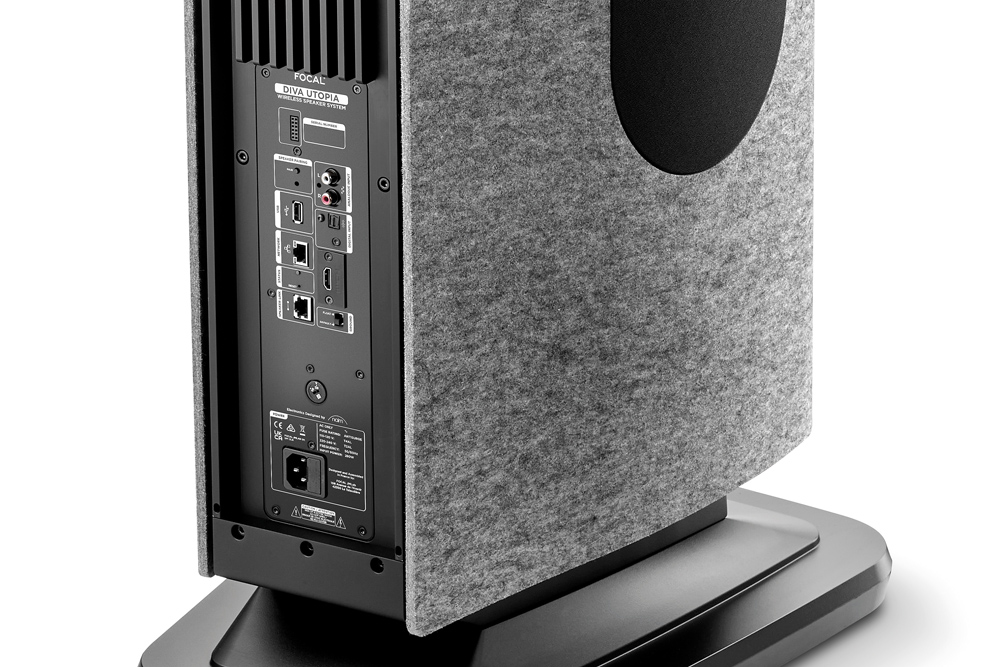
Bluetooth 5.3 streaming is via high quality aptX Adaptive, SBC and AAC. Music streaming (UPnP) features Spotify via Spotify Connect, Tidal via Tidal Connect, Qobuz Connect, and QQ Music via QPlay. Internet radio formats cover “Windows Media-formatted content”, MP3, ACC, Ogg Vorbis and MMS. Airplay 2 and Google Cast are available too. Multiroom availability allows syncing of up to 32 Focal and Naim streaming devices which can be controlled via the Focal and Naim app. Yeah, it’s all quite comprehensive.
Amplification specifications are as follows. A Class-A/B amplifier rated at 250 watts is dedicated to drive the woofers, a 75 watts Class-A/B is dedicated to the midrange driver, and the tweeter is handled by another Class-A/B 75 watter. So, overall, each speaker has in-built Class-A/B amplification totalling a healthy 400 watts. Naturally, the on-board electronics are designed by Naim.
The ‘Primary Speaker’, or the master as sometimes referred to, features a stereo RCA analogue, Toslink optical, HDMI eARC, CEC, USB-A 2.0 inputs, plus two RJ45 ports (Ethernet and ‘Secondary Speaker’ connection). The ‘Secondary Speaker’ sports a single RJ45 for connecting to the Primary unit. Of course, both speakers have a standard IEC socket. Further functions are via a ‘Pair’ button (Bluetooth), a switch for floating Ground, and a ‘Status/Reset’ switch with a small LED indicator. The network compatibility includes Ethernet (1000/100/10 Mbps), as mentioned above, while Wi-Fi is version 6. Ultra-Wide Band (UWB) technology promises to provide zero compression and near-zero latency.
Lastly, onto Focal’s ADAPT (Adaptive Acoustic Personal Tuning) technology. ADAPT is a patented proprietary algorithm which allows optimisation of each loudspeaker’s frequency response within a given acoustic space. It’s embedded in the Focal and Naim app and can be either activated or left inoperative. The software can also be made to calibrate automatically or manually.
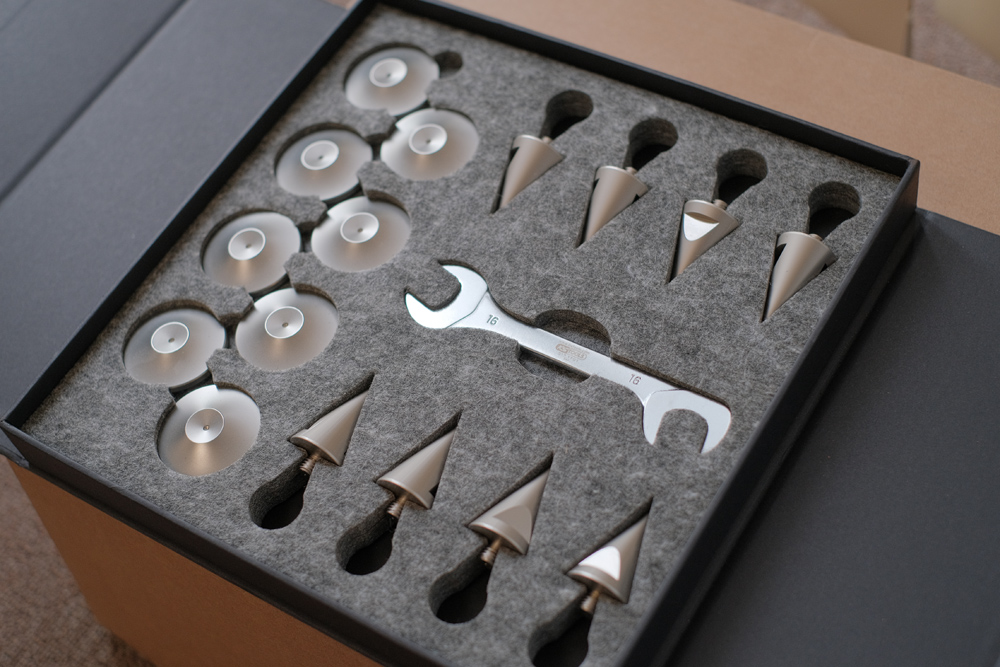
For manual setup, you simply enter the distances between the tweeter and the front and side walls to aid the calibration. For iPhone PRO users (iPhone 12 Pro onwards) the smartphone camera’s ‘Augmented Reality’ feature can be used to mark the tweeter location in relation to all the room’s parameters, making the process even simpler.
Quite cunningly, ADAPT leaves its influence open to user interpretation, meaning its ‘Intensity’ dial can be set to personal taste. In other words, you might like what it’s doing but prefer a touch less or more of it depending on your auditory palate. Going beyond this description, there’s quite a bit more involved in this very clever software suite in terms of its available features, settings and its provision for user experimentation.
There’s no arguing that Diva has a distinctive presence. The review sample’s cabinet was highlighted by swapable curvaceous panels wrapped in a light grey OEKO-TEX-certified felt material. As if they’re floating, the panels sit a little proud of the speaker’s enclosure and, around the front, the panels feature a circular ‘window’ cutout providing a view to the backlit Focal logo. Focal plans to offer a variety of panel colour options, including gloss paint finishes. The cabinet sits on an injected aluminium platform which lifts the bottom panel in order to allow optimum reflex port air flow (without chuffing).
Focal provides a frequency response specification for Diva Utopia ranging from 30 Hz to 40 kHz with +/- 3dB parameters, while the low frequencies’ -6dB point is given as 24 Hz. Maximum SPLs at a 1m peak are stated as 116dB per speaker pair. Each speaker weighs 64 kg with its height being 121 cm by 42 cm wide and 56 cm width.
The entire construct is beautifully finished and tightly assembled, with the quality also extending to the precision machined spiking system (the sharp spike points can be made to sit within the provided solid metal floor protectors). Included is a high quality, back lit remote control (its proximity sensor is cool) which provides access to the on-board features. In addition, Focal has designed a bespoke iOS and Android app while voice assistance is also supported (Siri, Google Assistant, etc.).
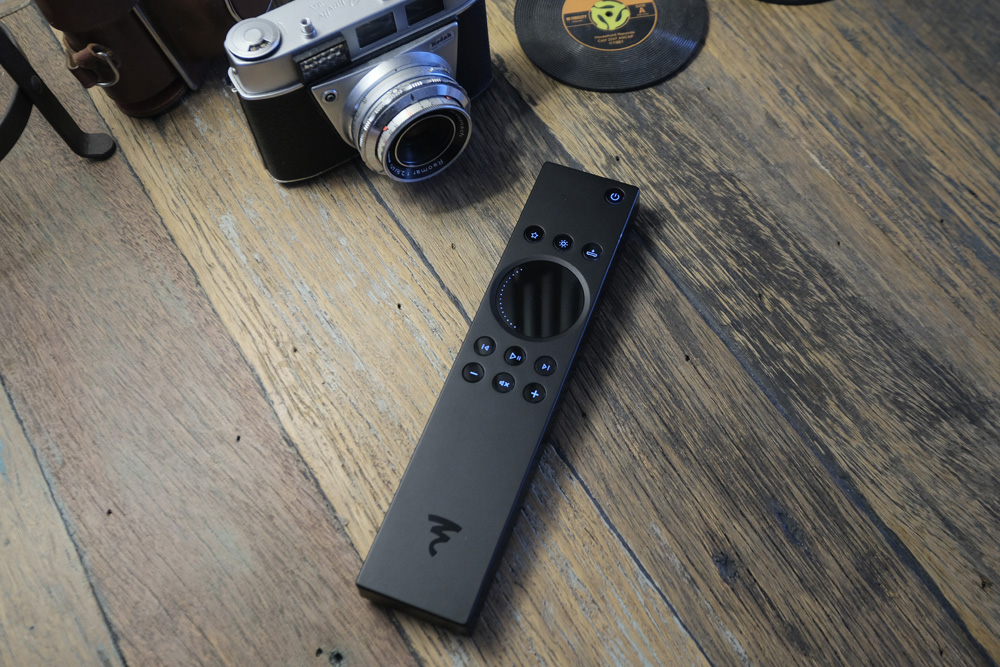
There’s actually quite an interesting background story to the development of Diva Utopia. On Focal’s website, you’ll find a number of well-produced videos depicting the aims, processes, etc. of designing and engineering Focal’s most advanced loudspeaker (go here).
Diva Divine
Setup was a breeze. I basically connected the Primary speaker to the network, opened the Focal and Naim app, found the speaker and then paired it to the Secondary speaker. I used Roon and Qobuz to stream music to Diva Utopia. I should mention that throughout several weeks of testing, Diva Utopia never dropped out of the network and usability was spot-on-trouble-free. Yay!
Diva Utopia senses input signal, springing into life from standby immediately after pressing ‘Play’. That’s when you’ll first notice the wealth of detail and sheer separation powers it’s capable of. Being free of crossover networks which can seep juice from the stoutest of amplifiers, active/powered speakers can potentially present music in a more incisive, more direct manner.
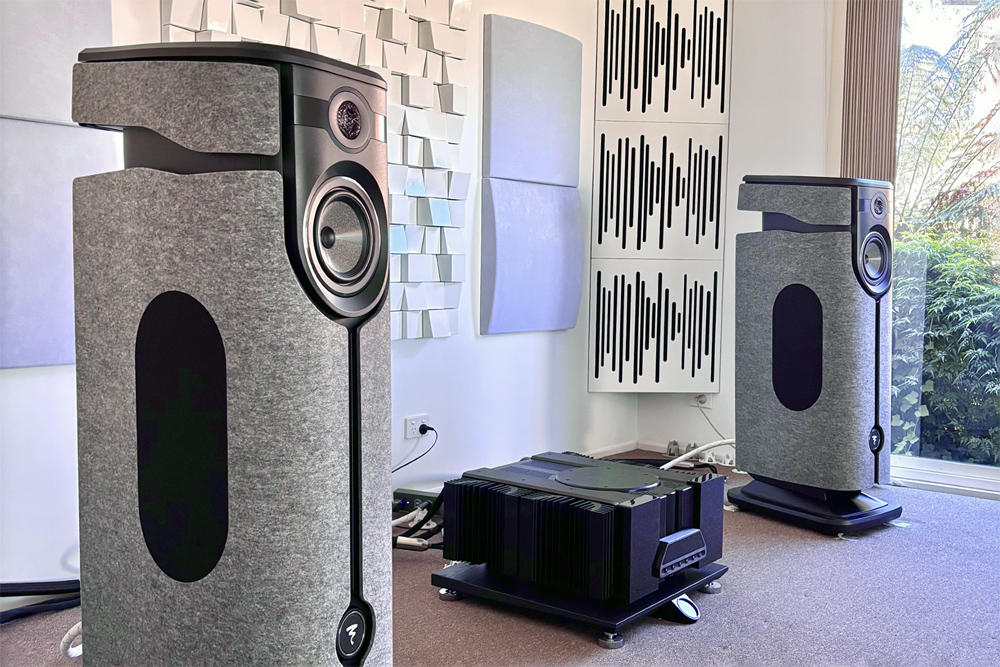
For example, on his live album Songbook, Chris Cornell’s plucking and stroking on the steel strings of his guitar, showcased an exceptional level of articulation while his peerless vocals were amazingly present. This recording can be a tad sibilant, and while Diva Utopia’s role is not to editorialise, it nevertheless somewhat tamed the hot/close-miked perspective. The crowd’s background cheers and claps were realistically reproduced with good depth dimensionality.
I was very impressed with the M-profile tweeter’s lifelike rendering of delicate cymbals, bells, etc. On Francine Thirteen’s “Queen Mary”, there was clear differentiation between the different chimes, while Diva Utopia was faithful to their metallic tone and their extended decay as captured in the recording. Again, Francine Thirteen’s almost spoken vocals are clearly delineated from the instrumental threads.
A total of eight woofers, even if only 165 mm each, will bring solid low frequencies to your bass party. On bass heavy material, such as Zander Zon’s dexterous “Accelerate” from the Sonorous album, or with the tonal richness of the acoustic bass on “Flamenco” from Adam Ben Ezra’s Can’t Stop Running album, or even the grotesquely overdone “Suck My Bass” from Bass Mekanik’s insane King of Bass album, all sounded deep and powerful while exposing all the inner detail and the true tonality of the bass instruments (well, maybe not so much on “Suck My Bass”, as it’s an artificial creation). And yes, playing King of Bass on a good floorstander is an exercise in excess and internal organ rearrangement. Yet, that recording’s excess aside, more natural, acoustic material, such as “Lupafte” from Nenad Vasilic’s The Art of Balkan Bass album, was rendered with tonal accuracy, exceptional presence and phenomenal transient attack.
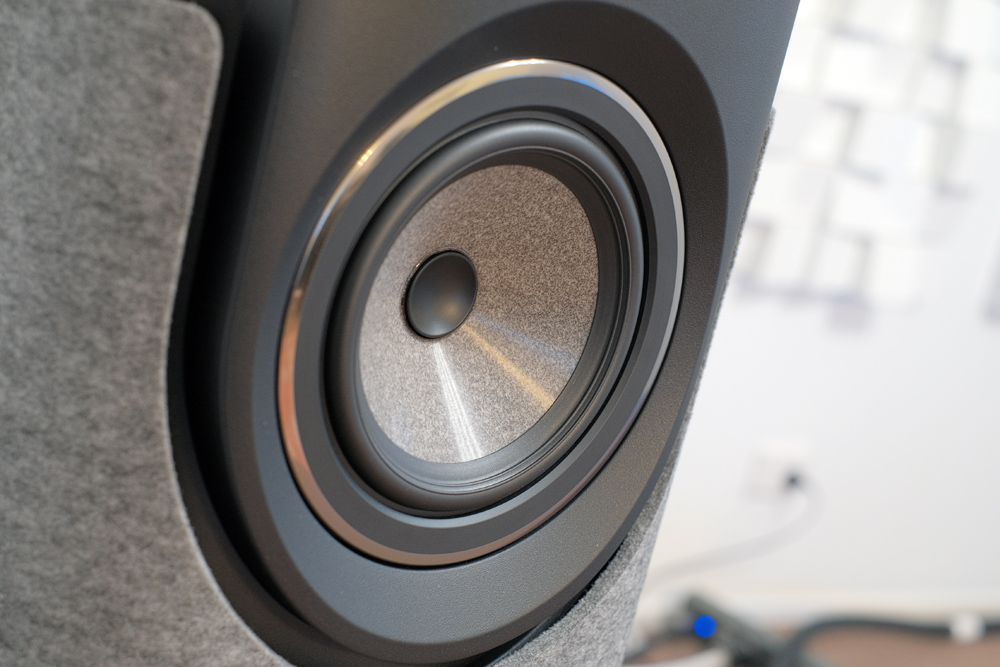
Soundstage dimensionality and image placement precision are strong points for Diva Utopia. In my room, there was excellent stage depth, good image height and outstanding spatial width. In my opinion, many speakers, while excelling in horizontal imaging due to on/off-axis optimisation, often fall short in delivering similar levels of stage depth and height. Instruments and vocalists were sharply focused around the overall spatial presentation.
This of course, translates to excellent soundfield reproduction for genres like large orchestral, chamber music, and intimate jazz, where recordings are often captured ‘live’. I was impressed by Diva Utopia’s ability to communicate the lowest levels of micro-detail, such as presented on the intro to “Tea For Two” from Tsuyoshi Yamamoto Trio’s What a Wonderful World album. The superb recording captures the minutest nuances to the track’s short piano intro, complete with delicate pedal sounds, followed by the drummer’s gently brushed snare and incidental skin resonances. Diva Utopia’s superb tweeter preserves every low level aspect of the music. Then when the track kicks-off, the tonality of the piano is dead-on-precise.
As good as Diva Utopia is with such gentle fare, the majesty of a big orchestral piece is given equal mindfulness. The over-one-day-long marathon of Abbado – Mahler, The Complete Recordings on Deutsche Grammophon and Decca is something I often have in the background as I write reviews and articles for SoundStage! Australia. While working, it spans for just about four days. However, I have several tracks which I’ve marked as favourites and which I bring in as review test tracks for a number of reasons.
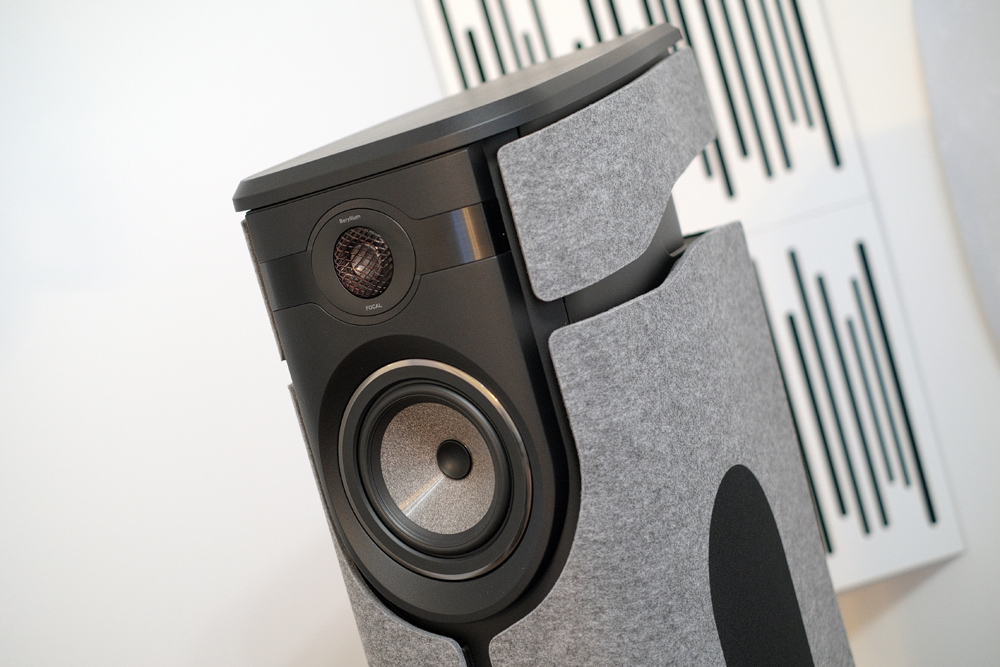
The live recording of “IV. Sturmisch Bewegt” from Mahler’s Symphony № 1 in D Major, with Abbado conducting the Berlin Philharmonic Orchestra, was given appropriate grandeur via Diva Utopia. The piece’s oscillation between calm introspection and the outright near-violence of the crescendos came across with satisfying dynamic expression. Also impressive was Diva Utopia’s excellent spatial reproduction, with the soundfield showing believable venue dimensionality and an appropriate scale.
Conclusion
High-end audio can be a cabinet of curiosities and a labyrinth of complexities. Diverse components are paired in order to create systems which balance constant evolution with the pursuit of often elusive synergies. It’s an intricate web of interactions and compatibilities between technologies, electronics, signal interfaces, acoustic devices, the AC from the wall sockets and, finally, the environment/listening space. How to simplify the equation?
Enter Focal’s Diva Utopia, abridging the entire multi-component signal chain to two minimalist, high performance, elegant loudspeakers incorporating proprietary drivers and advanced digital technologies.
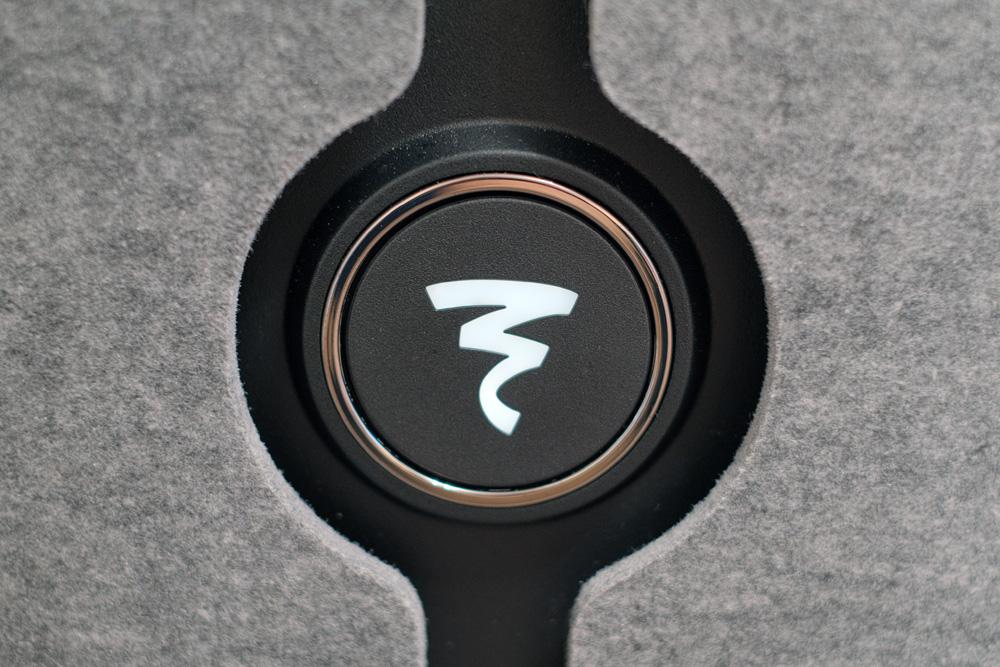
Yes, by providing sonic attributes in line with the expectations of keen listeners, and by doing so in a simple, user friendly form, Diva Utopia also liberates the audiophile from the shackles of excessive complexities.
A Diva she may be, but there’s no denying she’ll bestow the music lover with pure joie de vivre.
… Edgar Kramer
This email address is being protected from spambots. You need JavaScript enabled to view it.
Associated Equipment
- Speakers— Wilson Audio Alexia V, Axis Loudspeakers VoiceBox S (nearfield monitor), Vermouth Audio Little Luccas Mk.II Limited Edition, Atacama stands
- Amplifier— Gryphon Audio Antileon EVO
- Preamplifier— Supratek Cortese, Totaldac d1-triunity (periodically, direct to amplifier)
- Sources— Digital: 432 EVO Aeon Mk.3 Reference Music Server/Roon Core, Yamaha CD-S2100 transport, Totaldac d1-triunity DAC. Analogue: Transrotor Crescendo with Konstant Studio controller, Reed 1X Tonearm with upgraded internal wiring, Shelter Harmony cartridge, The Funk Firm Houdini cartridge decoupler, Supratek Cortese & REDGUM Audio RGPH2 phono stages
- Processor— DEQX PreMate (part of arsenal/casual use)
- Cables— VYDA Laboratories Orion Silver Reference HFC IC and speaker cables, PSC Audio custom design XLR, Vermouth Audio Reference loom,Tubulus Concentus USB
- Audio Rack— SGR Audio Statement MODEL V, Aspire Audio Belgravia amplifier platform (customised for Gryphon Audio Antileon EVO), Stereotech Aluminar Dark 3-tier rack
- Acoustic Treatment— Vicoustic Multifuser Wood, Wavewood Ultra, Cinema Round Premium and Super Bass Extreme
- Miscellaneous— Silent Angel Bonn N8 Pro network switch, GigaWatt PF-1 EVO power strip, Les Davis Audio Viscoelastic CLD discs, Voodoo Cable Iso-Pods, Bocchino Audio Mecado, VRC Vinyl Record Cleaning systemplus miscellaneous accessories
Focal Diva Utopia Active Wireless Loudspeakers
Price: AU$60,000/pair
Australian Warranty: Two Years
Audition at: Premium Sound
Australian Distributor: Westan
+61 (0) 3 9541 8888
https://www.westan.com.au/
Focal Loudspeakers
108 Rue de l'Avenir
42350 La Talaudière
France
+33 4 77 43 57 00
www.focal.com
